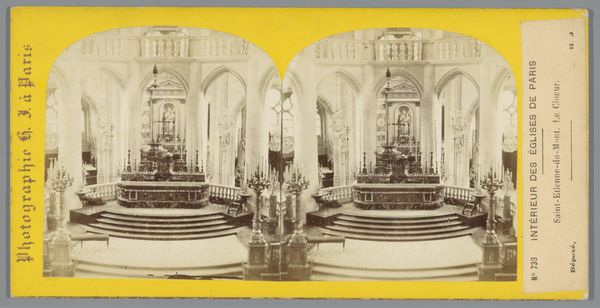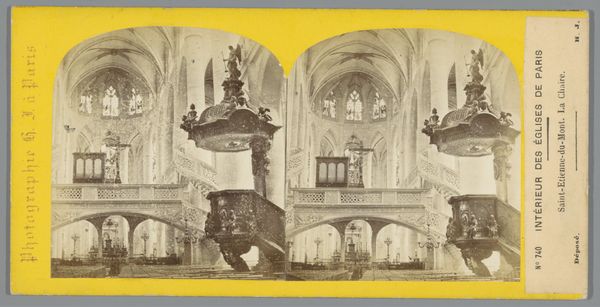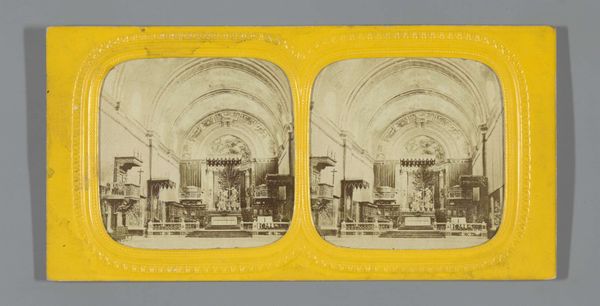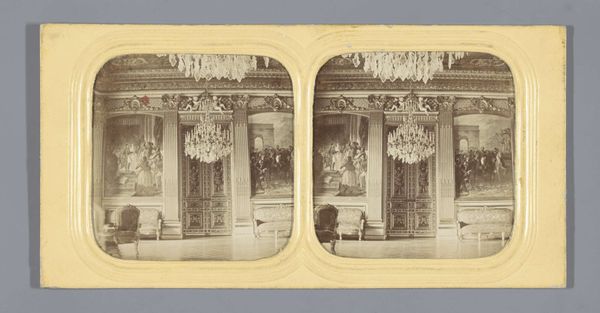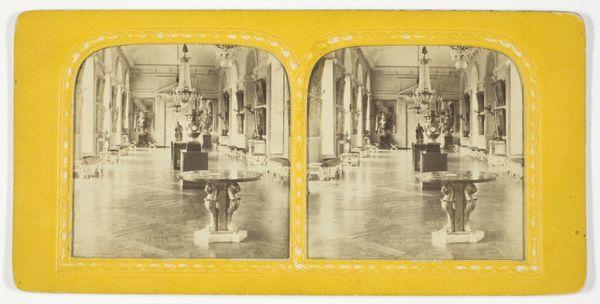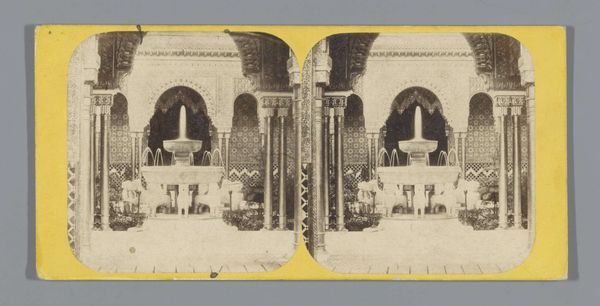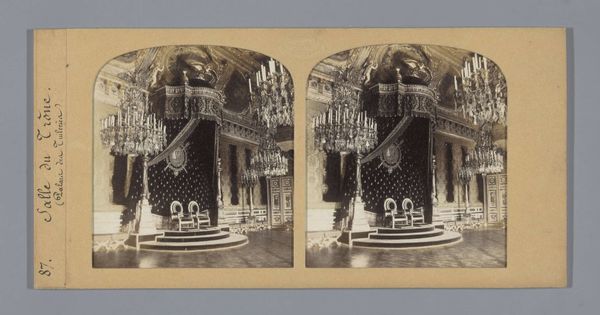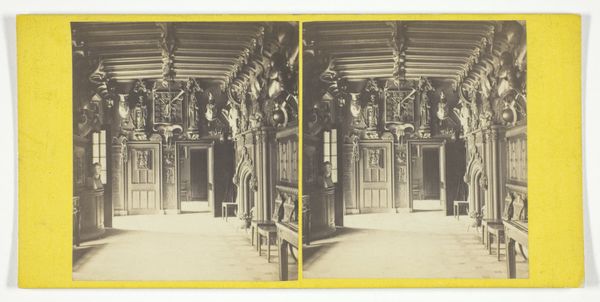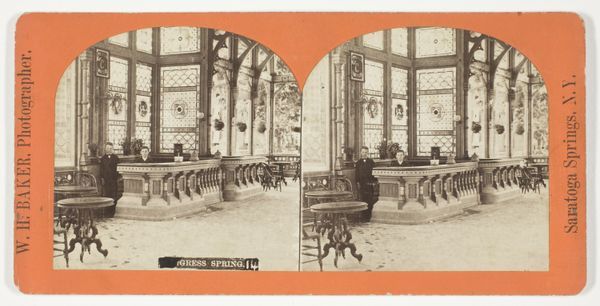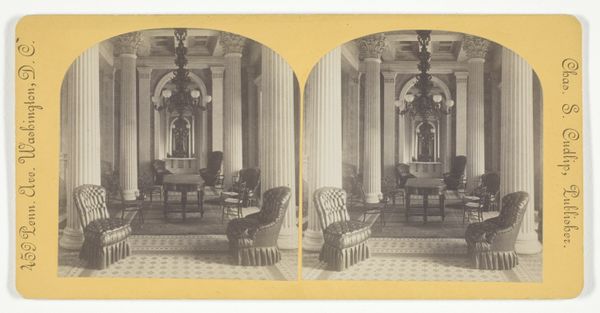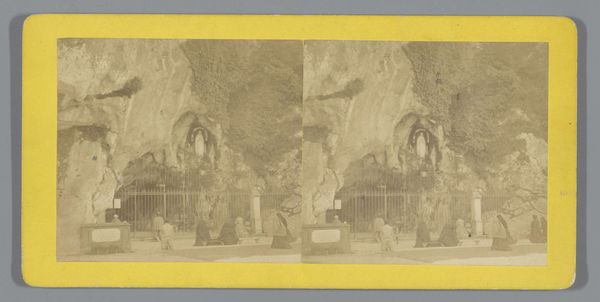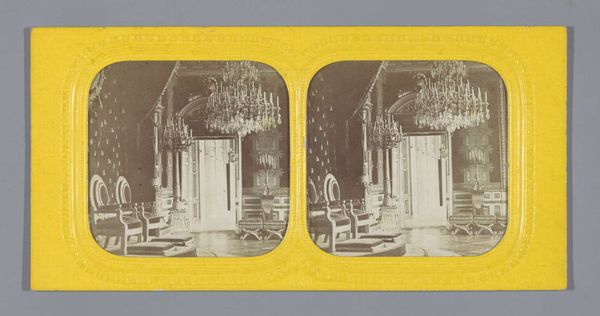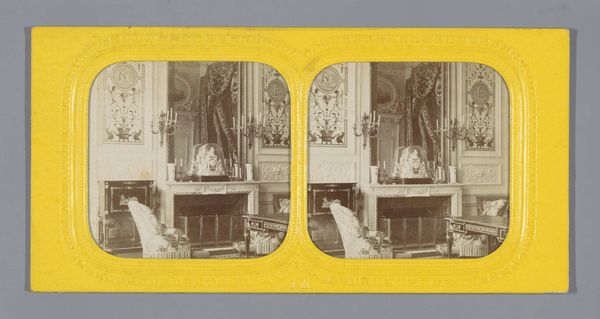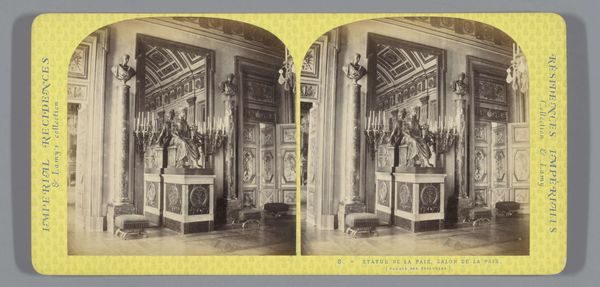
print, photography
#
16_19th-century
# print
#
photography
Dimensions: 7.5 × 7.5 cm (each image); 8.6 × 17.5 cm (card)
Copyright: Public Domain
Curator: This photographic print, dating back to the late 19th century, presents a serene interior view. Though formally titled "Untitled," the text visible in the image communicates very particular sentiments. Editor: It's remarkably still. It reminds me of spaces I visited as a child, where hushed reverence clung to the air. It seems as if it should have a certain smell, maybe old wood, furniture polish, flowers. Is this a church interior? Curator: Precisely. And that directness is part of its charm. We see the altar and rows of pews, but prominently displayed are banners reading “God is Love” and “The Lord is my Strength.” The photographic print and the religious messages of the banners were perhaps targeted to offer consolation to, or perhaps, to celebrate belonging among church communities. Editor: I’m interested in how the staged quality speaks to constructed notions of religious spaces in a changing era. What would it mean to perform this kind of faith? What do the signs pointing back to Christian faith do in a society perhaps ready to turn away from these spaces, whether ideologically, or practically? Curator: A good question. The image does raise the question of intention. Is it merely documentary, capturing a typical church scene, or is it subtly promoting faith and a sense of community, in that pre-war period? Is it about reinforcing religious belief? Perhaps it's an early form of public relations. Editor: Exactly. Consider the period: rapid industrialization, urbanization, anxieties about modernity… Images like this offered an anchor, a visual reassurance of enduring values. It’s no accident the banners emphasize love and strength – potent antidotes to societal upheaval. This isn't simply about photographing a church; it’s about packaging an idea of security and belonging for mass consumption, through photographic technology. Curator: A really keen observation on the dual message, but the simplicity and directness continue to be striking for me! And as a late 19th-century piece of image-making, it really manages to condense a message of home-making through the symbolic representation of something solid, like a place of worship, in times of cultural anxiety. Editor: Absolutely. This work serves as an interesting reminder that representations of devotion are hardly straightforward; often they intersect with social dynamics in complex and revealing ways.
Comments
No comments
Be the first to comment and join the conversation on the ultimate creative platform.
